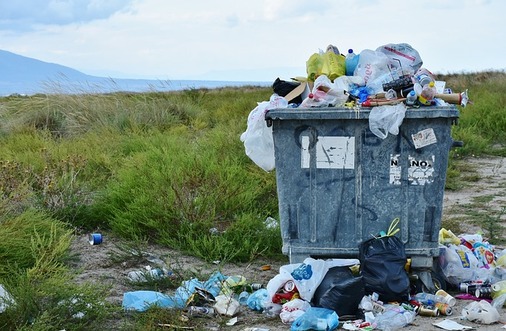
Efficient waste management and recycling practices are vital for maintaining a sustainable and responsible approach in commercial spaces. The impact of proper waste disposal goes beyond the immediate environment; it influences the community, conserves resources, and contributes to a healthier planet. This comprehensive guide explores essential tips for managing waste and recycling in commercial spaces, offering practical insights and actionable steps for businesses looking to enhance their environmental stewardship.
Here is our post on on 10 Benefits of Professional Cleaning for Commercial Climbing Walls
1. Understanding the Types of Waste
General Waste
Identify and categorize general waste, including everyday items like paper towels, food wrappers, and non-recyclable plastics. Understanding the composition of general waste helps in implementing appropriate disposal methods.
Recyclable Materials
Distinguish recyclable materials, such as paper, cardboard, glass, and certain plastics. Establish clear collection points for recyclables to encourage separation and increase recycling rates within commercial spaces.
Hazardous Waste
Be aware of hazardous waste generated in commercial operations, such as cleaning chemicals, batteries, and electronic equipment. Ensure proper disposal methods for these materials to prevent harm to both the environment and human health.
Organic Waste
Recognize organic waste, including food scraps and plant-based materials. Implement composting programs to divert organic waste from landfills, reducing methane emissions and promoting soil health.
E-Waste
Identify electronic waste (e-waste), such as old computers, printers, and mobile devices. Establish e-waste recycling programs to responsibly dispose of these items and recover valuable resources like metals and rare earth elements.
2. Setting Up Effective Waste Collection Points
Strategic Bin Placement
Strategically place waste bins throughout commercial spaces to encourage proper waste disposal. Position recycling bins alongside general waste bins to make recycling convenient and accessible for occupants.
Clear Signage
Use clear and simple signage to guide occupants on waste separation. Clearly label bins with visual cues to indicate whether they are for general waste, recycling, or specific materials like paper and plastic.
Size and Quantity
Consider the size and quantity of waste bins based on the volume of waste generated in different areas. Adequate bin capacity prevents overflow, encourages proper disposal, and minimizes the risk of cross-contamination.
Indoor and Outdoor Collection
Extend waste collection efforts to both indoor and outdoor spaces. Ensure that outdoor areas, such as parking lots and gathering spaces, have designated waste collection points to maintain cleanliness and discourage littering.
Collection Frequency
Determine the optimal collection frequency based on the volume of waste generated. Regular collections prevent overflowing bins, reduce unpleasant odors, and contribute to a cleaner and more hygienic environment.
See also our post on Commercial Ice Machine Cleaning: Ensuring Food Safety and Quality
3. Implementing a Robust Recycling Program
Employee Training
Provide comprehensive training to employees on the importance of recycling and proper waste disposal. Ensure they understand the specific materials accepted in recycling programs and the correct way to separate recyclables.
Collaborate with Waste Management Providers
Collaborate with waste management providers that prioritize recycling initiatives. Work with companies that have established recycling programs and can help optimize waste collection and separation processes.
Single-Stream Recycling
Consider adopting single-stream recycling, where various recyclable materials can be placed in a single bin. This simplifies the recycling process for occupants and potentially increases participation rates.
Monitor Contamination
Regularly monitor recycling bins for contamination, such as non-recyclable items mixed with recyclables. Implement corrective measures and provide additional education to minimize contamination and improve recycling efficiency.
Celebrate Recycling Success
Acknowledge and celebrate recycling achievements within the commercial space. Recognition can be through internal communication channels, such as newsletters or bulletin boards, to motivate ongoing participation.
4. Reducing Waste Generation
Evaluate Procurement Practices
Review and modify procurement practices to prioritize products with minimal packaging or those using recyclable materials. Encourage suppliers to adopt sustainable packaging practices to reduce waste generation.
Implement a Zero-Waste Policy
Strive towards a zero-waste goal by implementing policies that prioritize waste reduction. Encourage the use of reusable items, such as water bottles and containers, to minimize the need for disposable products.
Smart Printing Practices
Promote smart printing practices to reduce paper waste. Encourage double-sided printing, utilize electronic documentation whenever possible, and establish guidelines for responsible paper usage.
Consider Product Life Cycle
Evaluate the life cycle of products used within commercial spaces. Choose items that are durable, repairable, and have a longer lifespan to reduce the frequency of disposal and minimize environmental impact.
Engage Occupants in Waste Reduction
Involve occupants in waste reduction initiatives. Encourage them to be mindful of their waste generation, participate in recycling programs, and adopt practices that align with the overall waste reduction goals.
See also our post on Warehouse Cleaning Strategies: Organizing and Streamlining Operations
5. Addressing Hazardous Waste Responsibly
Identify Hazardous Materials
Educate staff on identifying hazardous materials commonly found in commercial spaces. Provide clear guidelines on how to handle and dispose of these materials safely to prevent environmental contamination.
Establish Hazardous Waste Storage Areas
Designate specific storage areas for hazardous waste. Ensure these areas comply with safety regulations and are equipped to handle spills or leaks to protect both the environment and personnel.
Collaborate with Certified Disposal Services
Partner with certified hazardous waste disposal services. Verify that these services adhere to regulatory standards and responsibly dispose of hazardous materials, minimizing the risk of environmental harm.
Emergency Response Plans
Develop emergency response plans for hazardous waste incidents. Clearly communicate roles and responsibilities, conduct regular drills, and ensure that all staff are trained on proper procedures in case of a hazardous waste-related emergency.
Regular Audits and Inspections
Conduct regular audits and inspections of hazardous waste storage areas. Ensure that containers are properly labeled, sealed, and stored according to safety regulations to prevent leaks and spills.
6. Engaging the Community and Stakeholders
Community Education Programs
Initiate community education programs to raise awareness about waste management and recycling. Collaborate with local schools, businesses, and organizations to create a broader impact and foster a culture of environmental responsibility.
Collaboration with Local Authorities
Collaborate with local authorities and waste management agencies. Stay informed about local waste regulations, participate in community clean-up initiatives, and contribute to broader municipal efforts towards sustainable waste management.
Publicize Achievements
Publicize waste management and recycling achievements to the local community. Share success stories through press releases, social media, and community events to inspire others and showcase the commercial space’s commitment to sustainability.
Involve Tenants and Occupants
Engage with tenants and occupants to promote a shared responsibility for waste management. Encourage open communication, seek feedback, and involve them in decision-making processes related to waste reduction and recycling initiatives.
Support Local Recycling Facilities
Support local recycling facilities by actively participating in their programs. Establish partnerships with recycling centers, attend community recycling events, and promote the use of locally available recycling services.
See also our post on 5 Comprehensive Benefits of Regular Cleaning for School Facilities
7. Continuous Improvement and Evaluation
Regular Performance Metrics
Establish key performance indicators (KPIs) for waste management and recycling initiatives. Regularly measure and evaluate these metrics to track progress and identify areas for improvement.
Periodic Reviews
Conduct periodic reviews of waste management practices. Assess the effectiveness of existing programs, gather feedback from stakeholders, and make adjustments to ensure continuous improvement.
Stay Informed about Innovations
Stay informed about innovations in waste management and recycling technologies. Explore new methods, equipment, and strategies that may enhance efficiency and sustainability within commercial spaces.
Employee Feedback Mechanisms
Create mechanisms for employees to provide feedback on waste management practices. Encourage them to share insights, suggestions, and observations to foster a culture of continuous improvement.
Celebrate Milestones
Celebrate milestones and achievements in waste management and recycling. Recognize and reward efforts, both internally and externally, to motivate ongoing commitment and engagement.
Conclusion
Waste management and recycling in commercial spaces are more than just disposal techniques; they are an expression of a company’s commitment to environmental sustainability and community well-being. Businesses can make a substantial contribution to a cleaner and healthier planet by recognizing the different types of waste, establishing effective collection points, putting strong recycling programs in place, reducing waste generation, handling hazardous waste responsibly, involving the community, and always improving practices.







